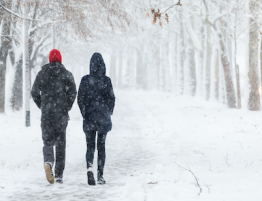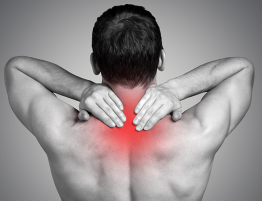
The humidity has faded away, yellow and red leaves are falling into our backyards, days are getting shorter and people are complaining about joint pain. It seems like every year when it starts to get colder outside people with arthritis and joint pain seem to be attacked with symptoms. Are people really feeling the pain in their bones and joints around this time of year? Are people just desperate to blame their pain on something? We all have an aunt, uncle, grandma or grandpa who claims the cold weather gives them problems. Let’s take a look and see if grandma has any validity to her claims or if she’s just buying into an old wives tale.
Weather Can Cause Joint Pain!
It’s hard for me to believe that any sort of weather condition causes joint pain, but according to large polls and trustworthy sources it’s entirely possible. According to weather.com,
“Every mile is two in winter,” said poet George Herbert. A big chunk of our Facebook fans couldn’t agree more, particularly the ones who have arthritis or joint pain. We polled them to find out what triggers their hip and knee pain, and 42 percent blamed cold weather — by far the leading cause. But can the elements really make your joints ache?
The scientific evidence is conflicting. Some studies find a strong relationship between short, cold, damp days and arthritis flare-ups. Research from Tufts University suggests changes in barometric pressure worsen knee pain in people with arthritis, while colder temps can cause painful changes in joint fluid thickness. Other studies have found little or no link between weather and joint pain.”
It seems like there’s actually some validity to joint pain and colder weather. Maybe it’s not a wives tale after all!
According to The Weather Channel’s Blog post and the video on colder weather and joint pain a huge percentage of people are experiencing more pain during the colder months. In fact almost half of the people with arthritis are experiencing more pain in the winter! But why?
Barometric Pressure
Barometric pressure, or as most people call it atmospheric pressure, is essentially the force that is put on objects from the weight of the air. Apparently your joints are very affected by barometric pressure. If you have arthritis or painful, more sensitive joints, you’ll literally feel the difference in the barometric pressure through your joints. On cold days or days when the temperatures drop or if there is extreme weather conditions, there will be a significant change in barometric pressure and a lot of people’s joints are affected by this change. But how are they related?
According to the video clip, inside everyone’s joints there is a lubricant called synovial fluid. You have this fluid in all of your joints right now. In the colder months the barometric pressure changes and causes this fluid to become more viscous, or to not flow as freely. This causes your joints to become stiffer! According to the video there are more reports of joint pain in the winter months than any other time of year!
Barometric Pressure Debate
We have a pretty good idea that the barometric pressure, or the atmospheric pressure is the joint pain culprit. However, it seems as though doctors aren’t sure exactly why the barometric pressure changes cause pain. The source above says that the cold weather causes the liquid in your joints to viscous which causes the arthritis flare-ups. However, some articles are contracting this idea
This video (sorry you’ll have to go to the source to view) seems to have a different opinion on why barometric pressure causes pain. In the video clip the CBS anchor tells us that the barometric pressure drops before the temperature drops. This is similar to what we’ve heard before. However, they’re saying that the change in pressure causes tissues around your joints to expand, which causes pain. They go on to mention that some people with arthritis or injuries may have hypersensitivity in their nerves, which can pick up even the subtlest changes that cause pain.
The video clip says that there’s nothing to worry about because everyone’s body adapts to these subtle changes. For example some people believe that they can move from a place like Boston with frequent barometric changes to a place like San Diego where there aren’t many changes in pressure and they’ll be living pain free. This may help them temporarily. However, after the first few drops in barometric pressure your body has adapted.
What is your opinion on this? Do you believe that the pressure changes the viscosity of your synovial fluid, which causes joint pain? Or do you believe the pressure changes cause inflammation in the tissues surrounding your joints, which causes pain?
What if you are experiencing constant weather related joint pain? Chances are they your arthritis is getting worse. If you are living with arthritis and joint pain all year than most likely the pain is beyond weather patterns.
Contact the Chiropractic Athletic Center in York, Pennsylvania and see how you can ignore the changes in barometric pressure and get back to living pain free again!(717) 767-4151
Resources:
Weather Channel Writers (Jun 11, 2012). Does Cold Weather Cause Joint Pain? [Blog Post]. Retrieved from http://www.weather.com/health/aches-pains/news/does-cold-weather-joint-pain-20120404








